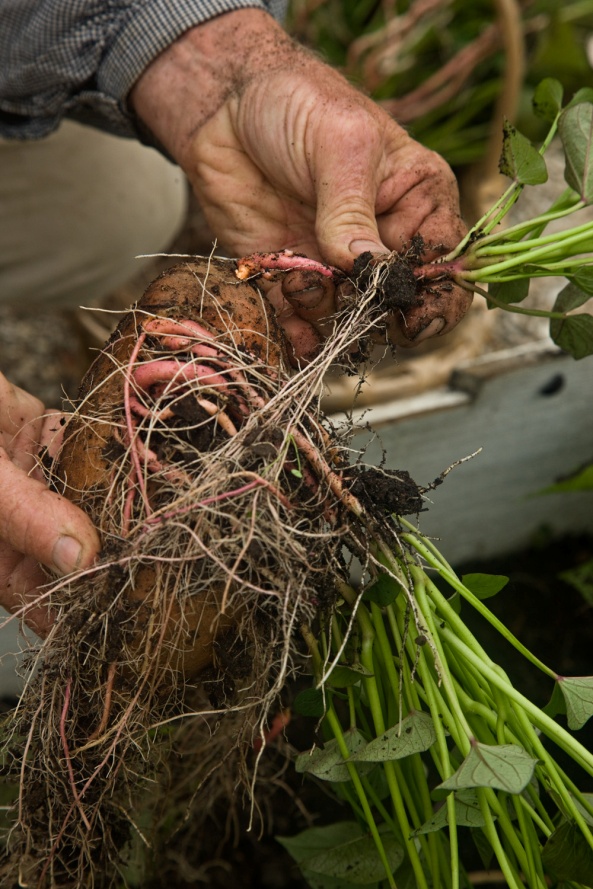
separating slips from the potato
The sweet potato was known in Virginia long before the white potato arrived. Robert Beverly listed the sweet potato as one of the plants “our Natives had originally amongst them” in The History and Present State of Virginia (1705). It is likely that the sweet potato was first brought to Virginia by Spanish explorers or possibly through trade between native tribes. In English garden works, the white and sweet potatoes were hopelessly confused. The white potato originally went by the misleading name of Virginia Potato while the sweet potato was known as the Spanish potato. By the 18th century the white potato picked up its modern name of Irish potato, an equally erroneous appellation as it is a native of South America. Beverley was very familiar with the sweet potato but had never seen the white potato in Virginia which is evident in his description of the sweet potato: “Their [the Natives] Potatoes are either red or white, about as long as a Boy’s Leg, and sometimes as long and big as both the Leg and Thigh of a young Child, and very much resembling it in Shape. I take these Kinds to be the same with those, which are represented in the Herbals, to be Spanish Potatoes. I am sure, those call’d English or Irish Potatoes are nothing like these, either in Shape, Colour, or Taste.”

setting out slips on ridges
We start sweet potato slips in late March by burying a potato about two inches deep in fine compost on a gentle hotbed. The frame is kept well watered and when the foliage is about six inches tall the slips are harvested by gently pulling them from the potato. These are then planted on ridges in well composted soil and then thoroughly watered in to settle the soil around the roots. Ridges are particularly important if your soil is stiff as the best shaped potatoes are formed in a light, well-drained soil.
For a complete description of the culture of sweet potatoes we invite you to investigate Vegetable Gardening the Colonial Williamsburg way, 18th century methods for today’s organic gardeners (Rodale Press)
Leave a Reply